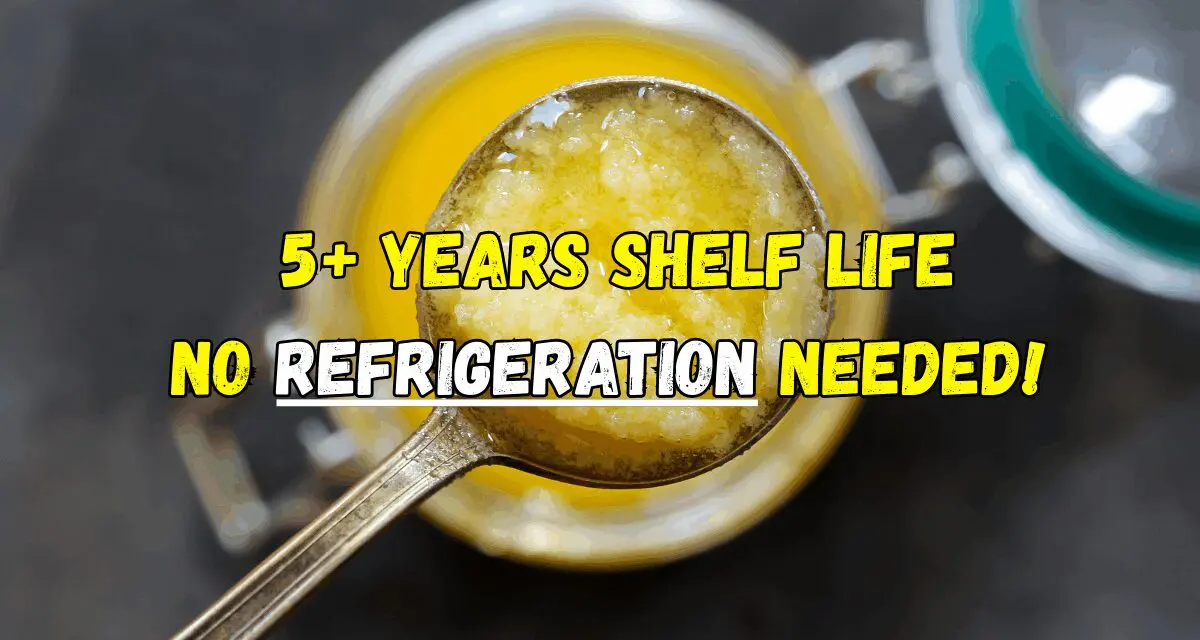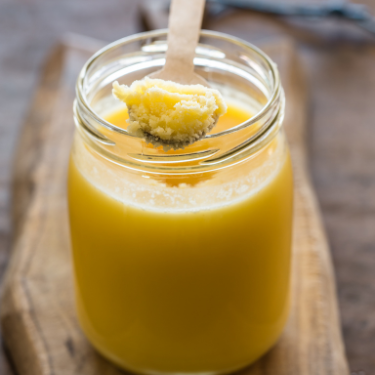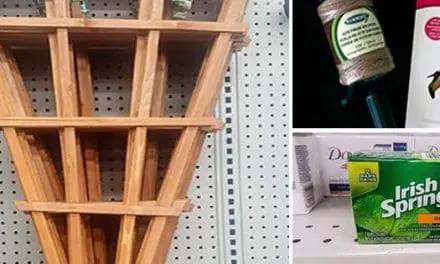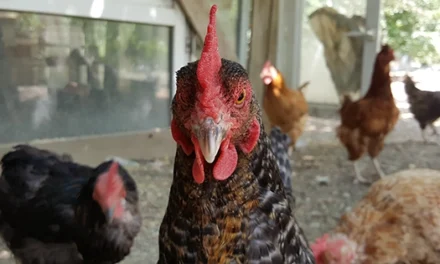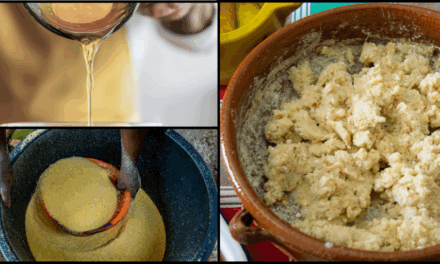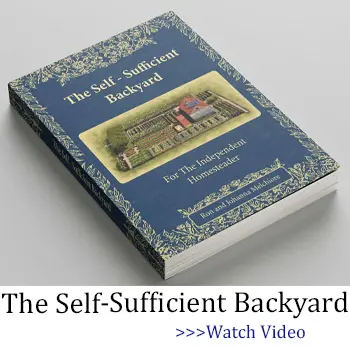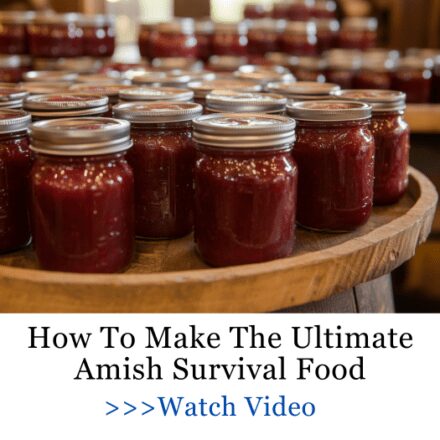It’s called “Ghee.” It’s butter that has been filtered to remove fats and fat solids leaving a clear and yellow liquid that looks and tastes like butter but has surprising properties. The most surprising thing about ghee is that it doesn’t require refrigeration.
Ghee is very popular across the Mideast and Asia up to the Himalayas. That’s because of its long storage properties without refrigeration. It has been the butter of choice for surviving civilizations across history.
The fact that ghee can be stored without refrigeration makes it an excellent survival food. It looks and tastes like butter but lasts for months if not years on the shelf. But we’re going to go beyond ghee to a ghee powder.
Ghee powder is bone-dry and lasts for years and years. When you add it to a recipe or even an oil you have all of the butter flavor you could want for any meal.
Ghee 101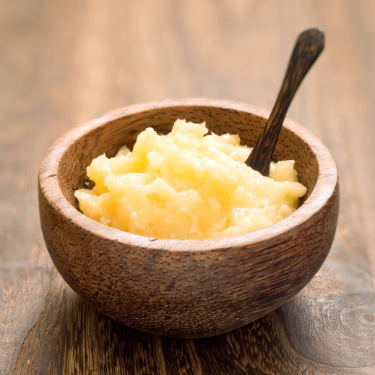
You can buy ghee. It’s on the shelf at many grocery stores (not the refrigerated sections), or you can make your own. Not surprisingly, it starts with butter but then there are a few steps. Here’s the basic recipe and then we’ll get into how to store it and how to dehydrate it to a powder that can last for years.
Foods like this one were a necessity during times such as the Great Depression, and many of those old methods are still useful today. You can find a list of more recipes like this one, along with step-by-step guides on how to make them, right here. When store shelves go empty and refrigeration isn’t an option, you’ll be glad you had this on hand.
Basic Ghee Recipe
The first step here is to filter the butter to make a basic ghee and then we’ll get into the steps to dry it to a powder.
Ingredients:
- Unsalted butter in any amount
Directions:
- Melt the butter in a heavy-bottom pan over medium heat.
- Skim the foam as it melts.
- Continue simmering until the liquid becomes clear and golden.
- Remove from the heat and let cool slightly.
- Pour through layers of cheesecloth to remove all remaining solids.
- You’re done. You now have ghee which you can pour into a jar and store for 3 months on the shelf or up to a year in the refrigerator.
- But now it’s powder time…
Turning Ghee into Powder
This is not easy but can be done. It requires the addition of milk powder or maltodextrin which you can buy online. You need one of those ingredients as a base so you can use a dehydrator to concentrate and dehydrate the ghee into a powder. Here’s one way to approach this:
- Filter the butter through cheesecloth to create a clear liquid ghee
- Add an equal amount of milk powder to make a fire paste
- Layer the paste on parchment paper in a dehydrator and dehydrate until the paste is dry
- Place the dried paste in a food processor and pulverize to a powder
- Remove the powder to sterilized canning jars and store up to a year on the shelf
How to Use Your Butter Powder
You have two ways to go with ghee. If it’s still a liquid filtered from butter fats you can use it the same way you use butter. If it’s powdered you can add it to recipes that call for butter to add some butter flavor. You can also reconstitute it by adding equal amounts to vegetable or olive oil to create a butter-like consistency.
>> How to Make the Ultimate Survival Food with a 25-Year Shelf Life <<
Classic recipes that include powdered ghee as an ingredient include potato recipes, casseroles. breads, biscuits and pastries and many desserts. What’s significant is that it can add a comforting butter flavor to anything when basics conveniences like refrigeration are not available. The best thing about it is that it lasts and lasts.
Storing Ghee and Ghee Powder
One of the most remarkable things about ghee is how easy it is to store. Unlike regular butter, it doesn’t need refrigeration to stay fresh. Once you’ve poured your ghee into a clean jar, all you need is a cool, dark spot in your pantry. A cupboard away from sunlight and heat is perfect. Over time, the ghee may develop a slightly nutty aroma or a deeper golden color, but this is normal and does not affect its quality. Avoid contaminating it with wet utensils, because introducing moisture can shorten its shelf life.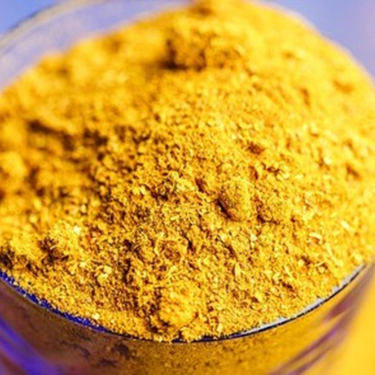
Ghee powder takes storage to the next level. Once fully dried and placed in a sterilized jar, it can sit on your shelf for years without losing flavor. The key is to keep it airtight and dry, away from heat or direct sunlight. Unlike liquid ghee, powder doesn’t separate or go rancid as quickly, making it an ideal solution for long-term storage, off-grid living, or emergency food kits.
Practical Uses for Ghee
Because it doesn’t spoil like regular butter, you can make larger batches during milking season and store them for months. Use it to fry eggs or sauté vegetables straight from your garden without worrying about the butter going rancid. When you harvest root vegetables, a little ghee melted into them before storage can help preserve flavor and texture.
Ghee powder is even more versatile. Keep a jar in your pantry and use it in bread dough, biscuits, or pancakes without needing fresh butter. You can mix it with rendered animal fats to stretch your supply and create a shelf-stable cooking fat that lasts through the winter. If you dry or preserve fruits and vegetables, a small spoon of ghee can be stirred in at serving time to add richness and calories without refrigeration.
The Amish poor man’s steak, the forever butter, the bread and hamburger in a jar – all of these are also great long-lasting sources of protein and fat that could help you survive when supermarkets shelves run dry. If you want to see how to prepare them, you can find a short video with all the recipes here.
Final Thoughts
They last, they taste amazing, and they make life on the homestead easier. You can cook, bake, or add them to just about anything without worrying about refrigeration. They store for months or even years, which means you always have a reliable source of butter flavor and calories on hand. Whether you’re making a quick meal from garden vegetables, baking bread, or adding richness to a stew, ghee is ready whenever you are. It’s simple, it’s practical, and it lasts, and that’s why it’s been trusted by surviving civilizations for centuries.
Corn Porridge: A Simple, Nourishing Staple You Can Make Anywhere
DIY Cheap Root Cellar Ideal for Your Food Stockpile (Video)
Best Hand Grain Mills You Can Buy
Tinderbread: The Fireproof Biscuit That Lasts Forever
How to Make Long-Lasting Flour from Wild Grains, Seeds, Nuts and Bark

